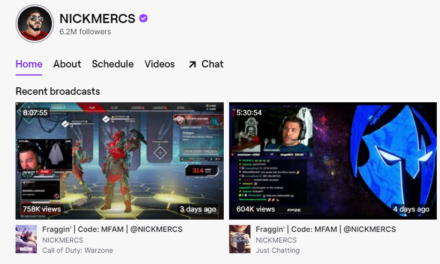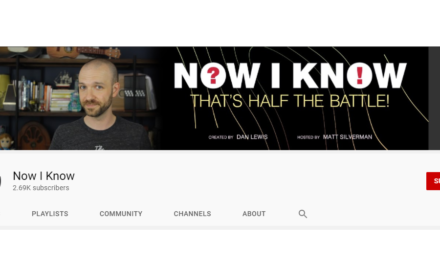Entrepreneur: Hanna Raskin
Biz: The Food Section
Tilt: Hard-hitting and investigative food and drink journalism across the US South
Primary Channel: Newsletter (850 paid, 10K free)
Other Channels: LinkedIn (1K), Instagram (5.4K), Facebook group (150)
Time to First Dollar: 2 months
Rev Streams: Paid subscriptions, partnerships, events, sponsorships, paid events
Our Favorite Actionable Advice
- Follow your interest: A former reporter turned museum studies graduate, Hanna combined her interests in investigative reporting and food into a Substack newsletter.
- Gain freedom with some help: Hanna won a year-long grant from Substack to quit her full-time job and devote all her time to the content business.
- Add revenue stream quickly: After two months, Hanna added content behind a paywall for subscribers – $9 a month or $99 a year. Later, she reduced the price to $5 a month and added a “thrift shop” option, charging $4 for a collection of six to eight evergreen stories.
The Story of Hanna Raskin
Hanna Raskin loved words and research. As a kindergartner, her dream job was to be a librarian by day and a detective by night.
She ended up combining both as a journalist. She started at the student newspaper at Oberlin College and worked for the student newspaper. Upon graduation in 1998, Hanna worked as a reporter for a small newspaper in Columbus, Mississippi, for $16K per year.
She also had become intrigued by the south of the US in her US history and politics classes, but her need for a higher salary prompted a move to the Arizona Daily Star in Tuscon.
“At the time, I was still super young and felt that my work deserved to last longer than one day. I put good work into these stories and would love for them to be around a little longer,” Hanna explains.
She returned to school to obtain her master’s degree in museum studies. She thought she could tell stories, but they would be on the wall in a museum for a while. But she experienced an unexpected change – deadlines, unlike the single-day turnaround in newspapers, were five years after the start.
Eventually, the two fields would lead her to create her content business, The Food Section, but that’s getting a little ahead in Hanna’s story.
Diving into the food world
Her graduate program also allowed her the opportunity to write her master’s thesis on the relationship between Jewish people and Chinese food. After grad school, Hanna spent the summer leading mountain bike trips and waitressing in Asheville, North Carolina.
“Your tip depends on how big your checks are, and there’s no better way to sell food than to learn how to describe it. So it’s the best training you can have for food writing. You see what diners are looking for and how they engage with food,” she says.
She enjoyed Asheville so much that she decided to stay. In 2006, Hanna landed as a food critic for the local alt-weekly publication Mountain Xpress. Four years later, she moved to the Dallas Observer as the food critic. A year later, she went to the Seattle Weekly for a similar role.
Developing a fresh critique of food and restaurants
In 2013, she returned to the South as the chief food critic at The Post and Courier in Charleston, South Carolina, as the chief food critic.
Hanna became known for her rigorous approach to food journalism. She often filed public records requests and dug deep into stories to ensure transparency and accountability in the food industry.
During the pandemic, Hanna informed the public about the experiences of frontline workers experienced. “I discover that many readers might be reluctant to read about politics, science, and any ‘hard stuff,’ they would read the food section and kind of get the same message,” she explains.
Her pandemic-style food coverage established her as an expert as restaurants and politicians sought her advice.
Hanna realized that many markets outside of Charleston did not have a trusted critic who looked out for the public’s interests when it came to food and restaurants. She had found part of her content tilt.
Securing a grant to launch a content business
Hanna knew nothing about newsletters when a friend suggested she apply for a Substack grant. In 2021, she won a $60K grant in exchange for 90% of paid subscription revenue in the first year. It also stipulated that she couldn’t expand revenue streams in that year.
In her new venture, she narrowed her content tilt, taking a journalistic approach to food in the South.
After leaving her newspaper role, she traveled across nine states to familiarize herself with her new coverage area. She introduced herself to potential readers. She held receptions and meet-and-greets for people to come out, say hello, and start to understand what she was attempting to do with her newsletter.
Launched in September 2021, the newsletter featured a new long-form content feature, which was released at 8 a.m. on Mondays. Two months later, she added a paywall to access the content, charging $9 a month or $99 a year. Within the first 30 days, she had 200 paid subscribers. Today, she has over 850.
Developing The Food Section brand
After a month’s hiatus (that she let her readers know about), Hanna started her second year, the first without Substack’s support, by adding more voices to her publication and diversifying her content. She hired freelance writers to author at least one piece a month.
In 2022, Hanna won an award for New Business of the Year in the Micro Tier from LION Publishers. Immediately after receiving the honor on stage stage, she was approached by Kyle Villemain, founder of The Assembly, a media site covering North Carolina. He wanted to partner with Hanna. She now oversees The Assembly’s food coverage in return for a recurring partnership fee.
Hanna has expanded to add more of these partnerships to expand her brand while generating a different and more consistent form of revenue.
With the more sustainable revenue stream, Hanna reduced the monthly newsletter subscription rate to $5 a month or $45 per year to make the content accessible to the public.
Hanna publishes the paid long-form content on Monday and a free newsletter on Friday. The Friday edition mixes housekeeping and sales, telling readers what is going on, what they are missing, and why they need to subscribe.
By 2023, she adopted a bureau model, hiring bureau chiefs in multiple cities. She provides editorial support and a share of the revenue in exchange for their work on growing the local subscriber base. These city editions are published on Wednesdays and can be purchased independently for $5 per month. All-access plans are $9 a month or $99 a year for all editions.
Diversifying revenue and growth tactics
Hanna constantly experiments with how to convert free subscribers into paid subscribers. As the Substack grant was ending, Hanna informed her audience that she would randomly delete 10% of free subscribers. If they wanted to continue receiving the newsletter, buying a subscription was the only way.
Hannah admits that the threat might not work for everyone, but it worked for her.
Another experimental tactic Hanna uses is to offer a “thrift shop” selection of stories normally behind the paywall. She assembles a collection of six to eight evergreen stories and charges $4 for all the links to the stories. She promotes this opportunity in the Friday edition.
Events represent another form of revenue for Hanna. Her signature event is a garlic crab championship in the spring. She is also planning a series of house parties in the coming year. While not ticketed events, they create awareness of The Food Section brand that might morph into something down the road.
Recently, Hanna dipped her toes into sponsorships as a form of revenue. She plans to use sponsorships for events and other smaller campaigns.
She also publishes a print edition of The Food Section twice a year. She uses it mostly as a content marketing tool, but she sells it to subscribers and at a local bookstore. The latter helps grow her newsletter subscriber base. The print edition also serves as a great way to showcase her brand at events and in partnership meetings.
About the author
Marc Maxhimer is the Partnerships & Publishing Coordinator at Tilt Publishing. He holds a bachelor’s degree in English and mathematics education and a master’s degree in educational administration. He previously taught middle school for 16 years. Marc lives in (and loves all things) Cleveland with his wife, two daughters, and dog Wilson. He looks forward to helping any content entrepreneur publish their book.





![A Successful Content Creator Does These 4 Things in Their Content Business [Research]](https://www.thetilt.com/wp-content/uploads/2021/07/Successful-2-440x264.jpeg)




